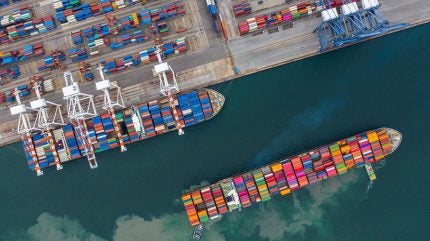
Global shipping has been steadily growing over the last two decades, and despite the setbacks of the Covid-19 pandemic, the outlook remains healthy with some projecting global throughput of ports growing to 988 million TEU by 2027. And as such, the busiest container ports in the world continue to expand in order to keep up with demand.
Indeed, looking at major capital projects in the maritime sector, port expansions and redevelopments, alongside the building of new ports, have all dominated the lists of projects to break ground over the last three years. In fact, nine of the ten most expensive maritime projects to break ground in 2023 were port projects.
When it comes to the busiest container ports in the world over the last year – barring the tenth busiest port in the world – the rest of the list is comprised of Asian ports, showing the importance of the region to global trade. Unsurprisingly, seven of these ports are located in China – in total, over 257 million TEU moved through the country’s ports in 2023.
While omitted from this list, an honourable mention must go to the Port of Los Angeles and the Port of Long Beach. Located next to each other and often working in tandem, due to the ports being operated as separate entities their combined throughput of 16.4 million TEU in 2023 is not included in this list.
So, here are the top ten busiest container ports in the world, ranked by annual container traffic.
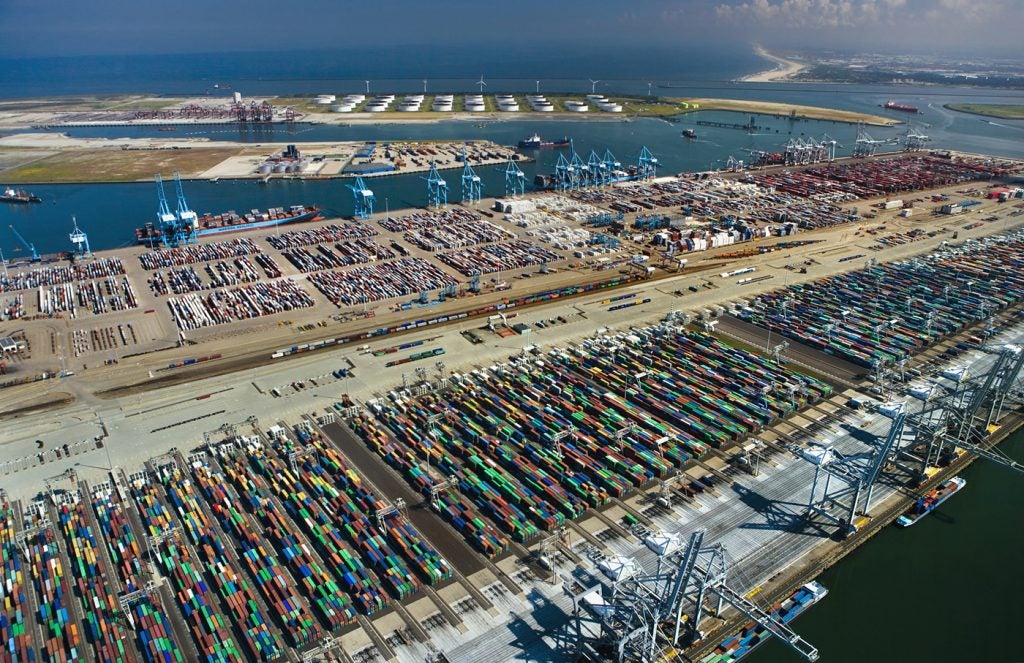
10. Port of Rotterdam: 13.4 million TEU
Originally opened in the 14th Century, the Port of Rotterdam is the largest seaport in Europe and the world’s largest seaport outside of Asia. Located near Rotterdam, Netherlands, it held the title of the world’s busiest port by annual cargo tonnage until 2004 when it was overtaken by the Port of Singapore.

US Tariffs are shifting - will you react or anticipate?
Don’t let policy changes catch you off guard. Stay proactive with real-time data and expert analysis.
By GlobalDataRotterdam has a port area of 12,500 hectares and a length of the port area of over 40km, while its quay length is 89km. The total land area of the port is over 7,800 hectares, and the water area is almost 4,500 hectares.
The busiest container port in Europe, Rotterdam has 14 container terminals to handle short-sea, deep-sea and inland shipping, and 20 container depots. The Maasvlakte II area of the port is currently undergoing expansion, which is expected to be completed by 2026.
In total, the throughput of the port decreased by 6.1% in 2023 compared to the previous year, mainly through decreased coal, container, and dry bulk throughput according to the port. The container throughput was 13.4 million TEU in 2023, a decrease of 7% compared to 2022.
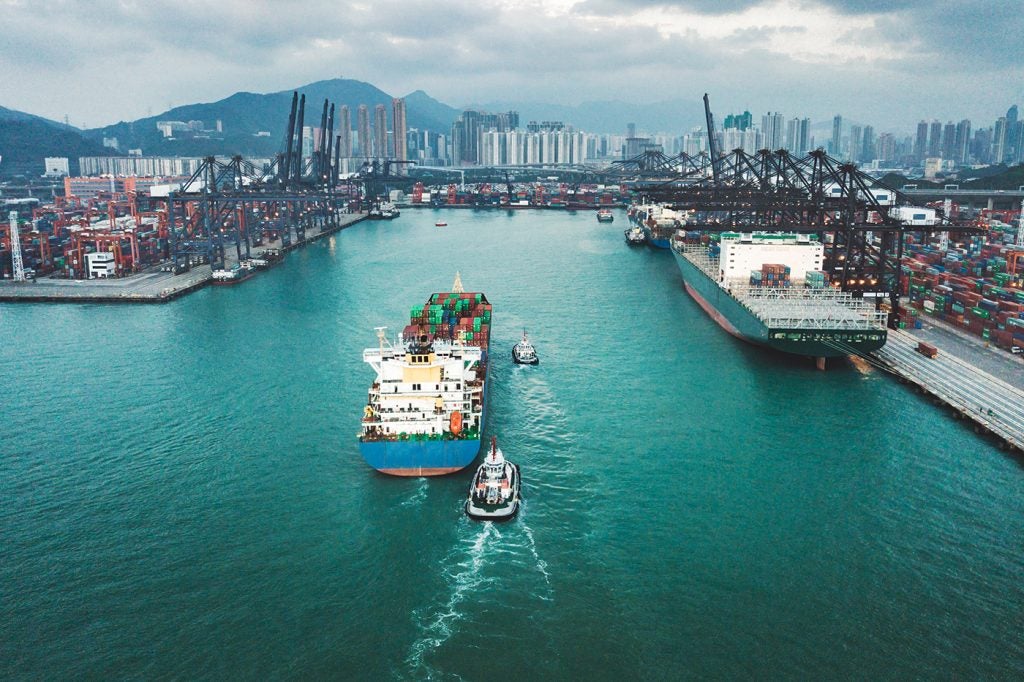
9. Port of Hong Kong: 14.3 million TEU
The Port of Hong Kong is a deepwater port located in the Hong Kong SAR on the South China Sea. The port utilises the natural deep waters of Victoria Harbour, giving it the capacity to berth all vessel types. 400 container liner services pass through the port weekly to over 500 destinations.
Despite recording an annual throughput of 14.3 million TEU in 2023, this was actually a 14% decline when compared to the previous year.
There are currently ten container terminals in total. The Kwai Tsing Container Terminals contain nine and 24 berths and the River Trade Terminal contains 49 births for river cargo in the Pearl River Delta. The Port of Hong Kong covers a total area of 279 hectares.
The Port of Hong Kong has been exploring a new container terminal, CT10, although the plans were reportedly shelved due to financial unfeasibility.
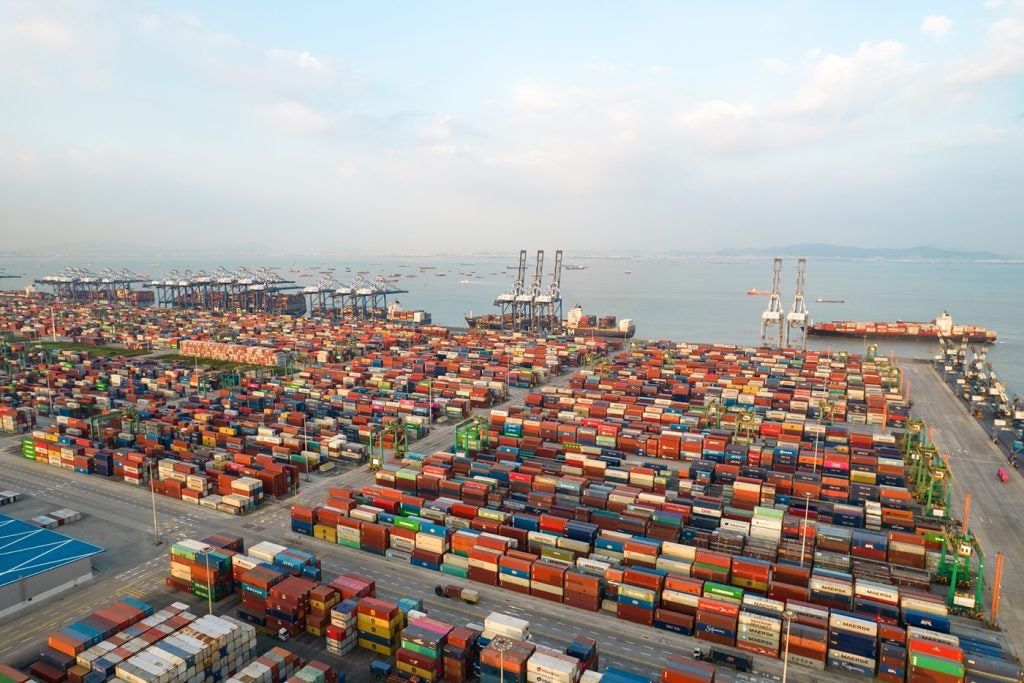
8. Port of Guangzhou: 20.8 million TEU
The Port of Guangzhou is the main seaport of the city of Guangzhou in South China. The port is part of the Maritime Silk Road connecting China to Europe via India, Mombasa, and the Suez Canal.
The port, which has been operated by the state-owned Guangzhou Port Group since 2004, comprises four main areas including the Downtown Port, Huangpu Port, Xinsha Port and Nansha Port Areas.
Guangzhou port had a throughput of 20.8 million TEU in 2023, a 2.5% increase in its capacity in the previous year.
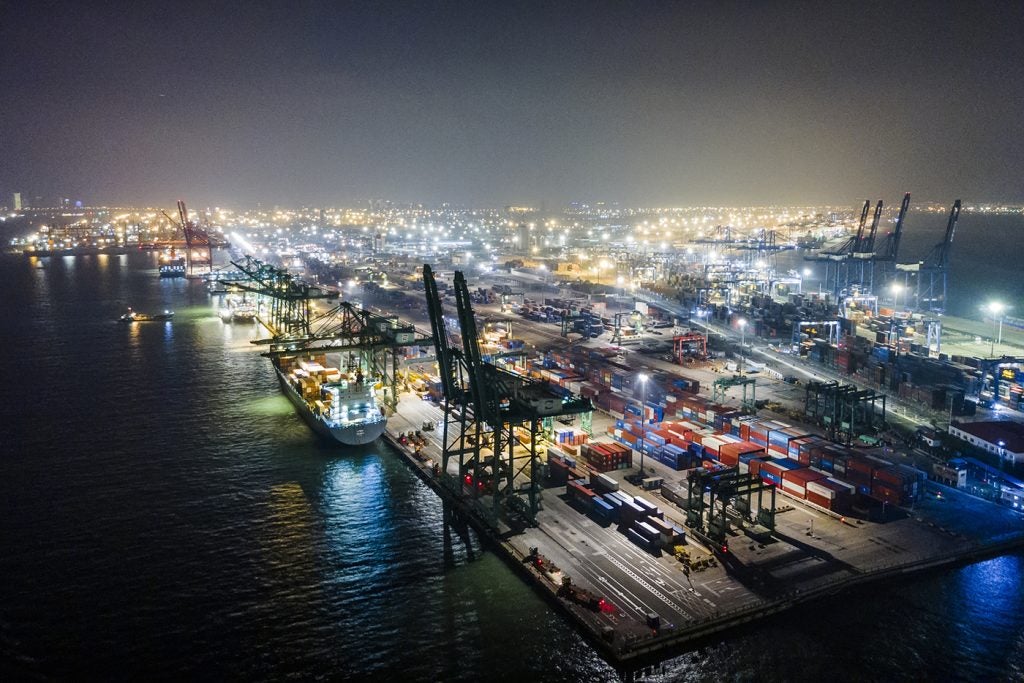
7. Port of Tianjin: 21.8 million TEU
The largest port in Northern China, the Port of Tianjin is the main maritime gateway to the capital city, Beijing. The largest man-made port in mainland China, the Tianjin Xingang, or Tianjin New Port, opened in 1952 on the western shore of the Bohai Bay.
The Port of Tianjin covers 121,000 hectares of land surface, with over 31.9km of quay shoreline, operating 140 berths and 94 public berths. The port comprises four main areas – North Port handling containers and general cargo, East Port handling containers, South Port mainly liquid and dry bulk cargoes and Haihe Port of Tanggu used by coastal vessels.
According to the Mayor of Tianjin, Zhang Gong, the terminal reached a throughput of 21.8 million TEU in 2023. Gong also stated that efforts are being made to improve customs clearance facilitation and port supervision services at Tianjin port. The port is one end of a green shipping corridor between China and Singapore.
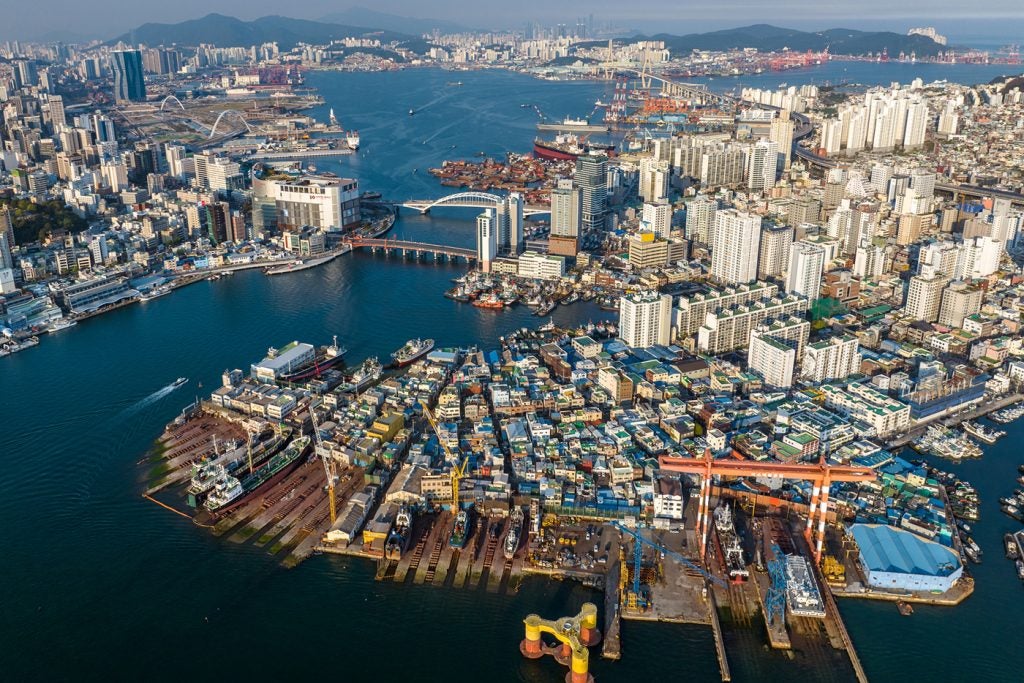
6. Port of Busan: 22.8m TEU
Located at the mouth of the Naktong River, the Port of Busan is the largest port in South Korea. Managed and operated by the Busan Port Authority (BPA), the port is made up of North Port, South Port, Gamcheon Port, Dadaepo Port, an international passenger terminal, and six container terminals.
Covering a total area of 1200 hectares, Busan New Port features 26.8km of quay wall, allowing it to berth 169 vessels simultaneously. The port has 37 container terminals and 8 general cargo terminals, with a total of 190 berths.
Container traffic at the Port of Busan hit a record 22.75 million TEU in 2023, a 3.1% increase on the previous year. The figure topped the port’s previous annual record set in 2021 by 44,000 TEU.
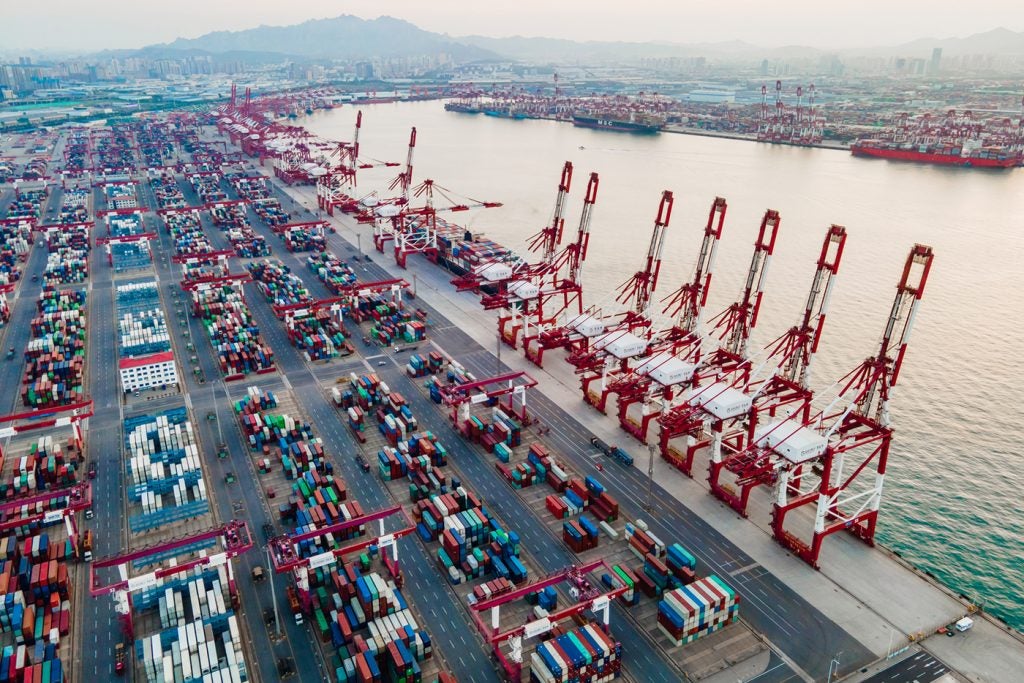
5. Port of Qingdao: 26.4 million TEU
Located on the Yellow Sea, the Port of Qingdao is an automatic seaport, which utilises a range of advanced systems, including Automatic Quay Cranes, Automatic Guided Vehicles, and an Automatic Rail Mounted Gantry.
The Seaport is located in the city of Qingdao in eastern China, a major nodal city of the Belt and Road Initiative (BRI) that connects Continental and East Asia with Europe. Qingdao Port consists of four areas: Dagang port, Qianwan port, Huangdong oil port, and Dongjiakou port.
Operated by the state-owned Qingdao Assets Supervision and Administration Commission (SASAC), the port is touted as the world’s largest port for iron ore and China’s largest port of crude oil. The port is connected to more than 450 ports in over 130 countries and regions across the world.
The Port of Qingdao moved 26.39 million TEU in 2023, representing a 2.8% rise compared to the previous year.
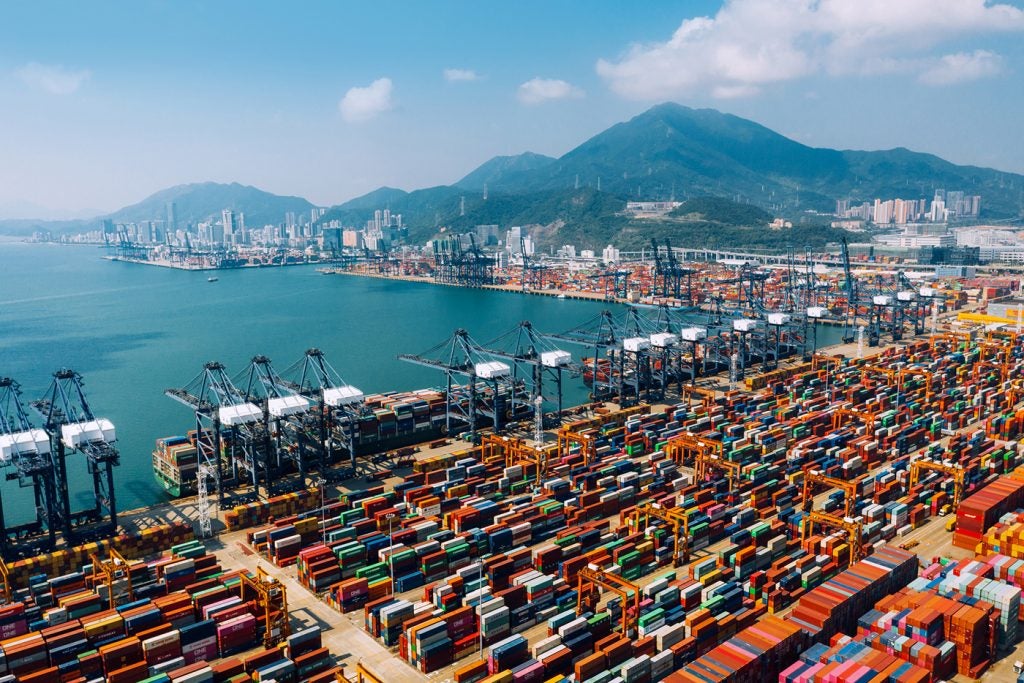
4. Port of Shenzhen: 26.9 million TEU
Located in Guangdong, South China, the Port of Shenzhen is the collective name for a group of ports spread across 260km (160 miles) of coastline in the south of the Pearl River Delta.
The port is split into the East and West ports by the Kowloon Peninsula and houses five main Container terminals. There are over 100 warehouse operators, 80 companies providing maritime services, and over 2,000 transportation companies in the port. Around 40 shipping companies are headquartered in the Port of Shenzhen, where around 130 international container lines have been launched.
Despite recording a 10.3% decrease in capacity compared to 2022, handling 26.89 million TEU in 2023, the Port of Shenzhen remains one of the busiest ports in the world.
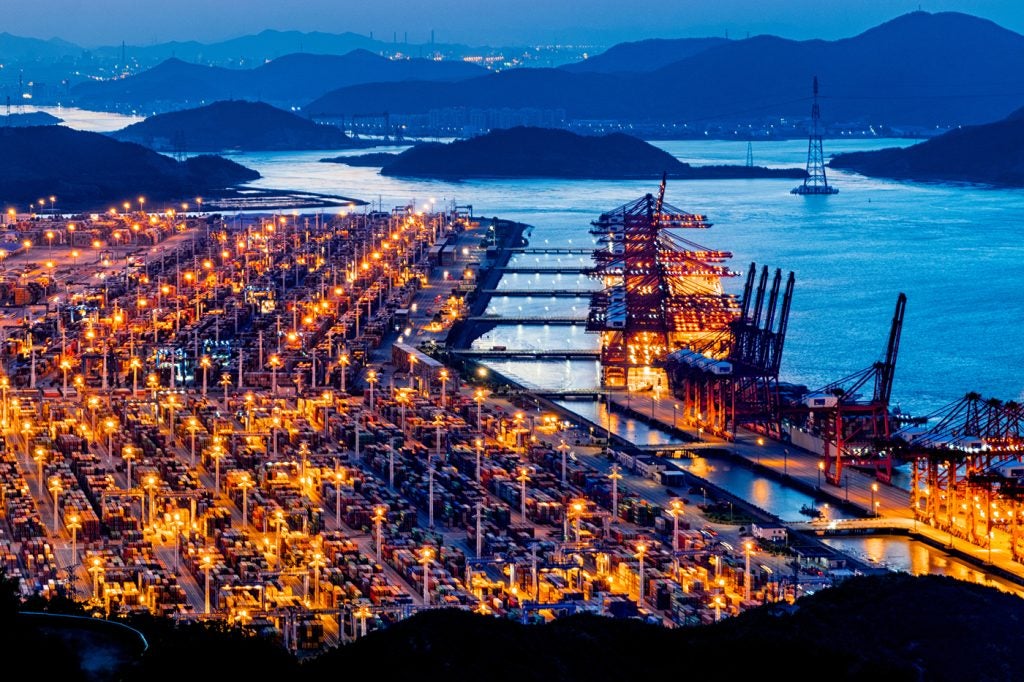
3. Port of Ningbo-Zhoushan: 35.3 million TEU
Located on the East China Sea, the Port of Ningbo-Zhoushan sits in the southeast of Hangzhou Bay. The port comprises the Port of Ningbo and the Port of Zhoushan, which merged into one combined cargo handling centre in 2006.
Ningbo-Zhoushan is made up of the Beilun Seaport, Zhenhai Estuary Port, the old Ningbo Harbour Inland River Port, as well as the Chuanshan Port area the Daixe Port area. The port complex is a modern multi-purpose deep water port, with a total of 191 berths including 39 deep water berths with 10,000 and more tonnage.
The Port of Ningbo-Zhoushan’s container throughput totalled over 35.3 million TEU in 2023, a 5.9% increase compared to the previous year.
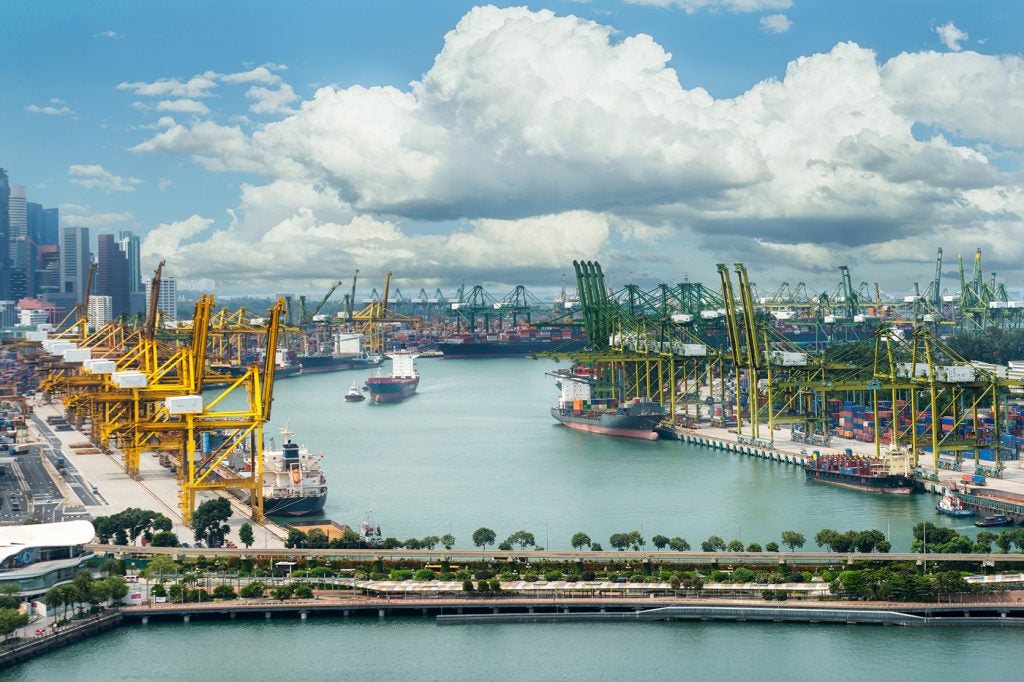
2. Port of Singapore: 39 million TEU
Located in the island city-state of Singapore on the southern end of the Malay Peninsula, the Port of Singapore offers connectivity to more than 600 ports in 123 countries.
A historically important maritime hub, the port underwent S$3.5bn ($2.61bn) project at the Pasir Panjang terminal to add 15 mega containership berths, which was completed in June 2015. The terminal is capable of handling container vessels of 130,000 TEU or more.
The port is currently constructing a next-generation container terminal, the Tuas Terminal, which is expected to be completed in 2040. Tuas is designed for an annual capacity of 65 million TEU.
The Port of Singapore’s port handled a record 39.01 million TEU in 2023, a 4.6% increase in its throughput compared to 2022.
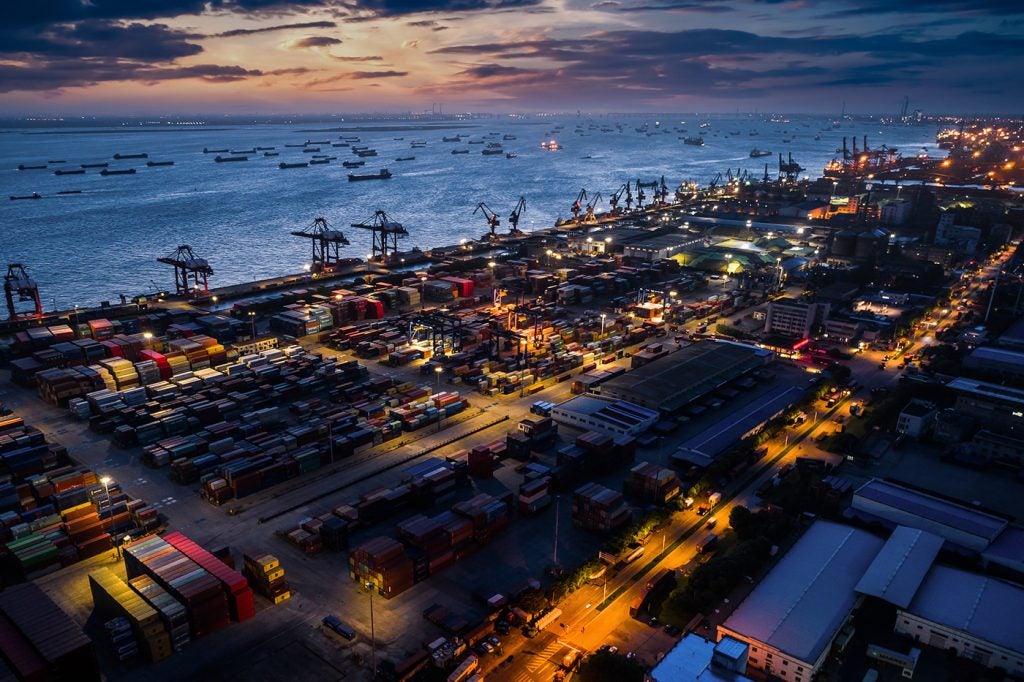
1. Port of Shanghai: 49 million TEU
The Port of Shanghai is the busiest port in the world in terms of cargo tonnage. The port is located at the mouth of the Yangtze River and covers an area of 3,619km².
The port comprises 125 berths with a total quay length of about 20km. It serves more than 2,000 container ships every month and accounts for a quarter of China’s total foreign trade.
Wusongkou, Waigaoqiao, and Yangshan are the three main container port areas of the Port of Shanghai. The container terminals have over 13km quay length, 43 berths, and 156 quay cranes.
Shanghai Port has two bulk cargo terminals and three break-bulk terminals, which are located in the Luojing, Wusong, and Longwu areas. The cruise terminal covers an area of 160km2, with an 850m quay wall and four large berths.
Container volume at Shanghai port exceeded 49m TEU in 2023, a 1.7 million TEU increase compared to 2022, or a 3.6 % growth in throughput.



